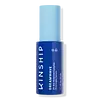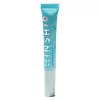What's inside
What's inside
 Key Ingredients
Key Ingredients

 Benefits
Benefits

 Concerns
Concerns

 Ingredients Side-by-side
Ingredients Side-by-side

Water
Skin ConditioningGlycerin
HumectantSqualane
EmollientCaprylic/Capric Triglyceride
MaskingCoconut Alkanes
EmollientAloe Barbadensis Leaf Juice
Skin ConditioningCetearyl Olivate
Sorbitan Olivate
EmulsifyingChlorella Vulgaris Extract
Skin ConditioningButyrospermum Parkii Nut Extract
EmollientCetyl Palmitate
EmollientSorbitan Palmitate
EmulsifyingDipropylene Glycol
HumectantPropanediol
SolventTranexamic Acid
AstringentPhenoxyethanol
PreservativeSodium Palmitoyl Proline
Skin ConditioningCaprylyl Glycol
EmollientCarbomer
Emulsion StabilisingCoco-Caprylate/Caprate
EmollientEthylhexylglycerin
Skin ConditioningHexylene Glycol
EmulsifyingTocopherol
AntioxidantSodium Phytate
Niacinamide
SmoothingButylene Glycol
HumectantOlea Europaea Leaf Extract
PerfumingDicaprylyl Ether
EmollientSafflower Seed Oil Piperonyl Esters
Skin ConditioningSodium Hyaluronate
HumectantLecithin
EmollientLavandula Angustifolia Oil
MaskingCitrus Paradisi Peel Oil
MaskingAniba Rosaeodora Wood Oil
AstringentRetinal
Skin ConditioningCamellia Sinensis Leaf Extract
AntimicrobialPentylene Glycol
Skin ConditioningLactic Acid
BufferingNymphaea Alba Flower Extract
Skin ConditioningLactobacillus Ferment
Skin ConditioningCitric Acid
BufferingSodium Benzoate
MaskingPotassium Sorbate
PreservativeSodium Hyaluronate Crosspolymer
HumectantSodium Hydroxide
BufferingLinalool
PerfumingLimonene
PerfumingWater, Glycerin, Squalane, Caprylic/Capric Triglyceride, Coconut Alkanes, Aloe Barbadensis Leaf Juice, Cetearyl Olivate, Sorbitan Olivate, Chlorella Vulgaris Extract, Butyrospermum Parkii Nut Extract, Cetyl Palmitate, Sorbitan Palmitate, Dipropylene Glycol, Propanediol, Tranexamic Acid, Phenoxyethanol, Sodium Palmitoyl Proline, Caprylyl Glycol, Carbomer, Coco-Caprylate/Caprate, Ethylhexylglycerin, Hexylene Glycol, Tocopherol, Sodium Phytate, Niacinamide, Butylene Glycol, Olea Europaea Leaf Extract, Dicaprylyl Ether, Safflower Seed Oil Piperonyl Esters, Sodium Hyaluronate, Lecithin, Lavandula Angustifolia Oil, Citrus Paradisi Peel Oil, Aniba Rosaeodora Wood Oil, Retinal, Camellia Sinensis Leaf Extract, Pentylene Glycol, Lactic Acid, Nymphaea Alba Flower Extract, Lactobacillus Ferment, Citric Acid, Sodium Benzoate, Potassium Sorbate, Sodium Hyaluronate Crosspolymer, Sodium Hydroxide, Linalool, Limonene
Hydroxystearic/Linolenic/Oleic Polyglycerides
EmollientHelianthus Annuus Seed Oil
EmollientRicinus Communis Seed Oil
MaskingPolyhydroxystearic Acid
EmulsifyingAgave Tequilana Leaf Extract
AstringentCocos Nucifera Oil
MaskingHydrogenated Castor Oil
EmollientHelianthus Annuus Seed Wax
Skin ConditioningButyrospermum Parkii Butter
Skin ConditioningCoconut Alkanes
EmollientCopernicia Cerifera Wax
C18-38 Alkyl Hydroxystearoyl Stearate
EmollientSodium Hyaluronate
HumectantSqualane
EmollientCarica Papaya Seed Oil
HumectantLactobacillus/Papaya Fruit Ferment Extract
AbrasiveHippophae Rhamnoides Fruit Oil
Skin ProtectingCitrullus Lanatus Seed Oil
EmollientCoco-Caprylate/Caprate
EmollientEclipta Prostrata Extract
Skin ConditioningEuterpe Oleracea Sterols
Skin ConditioningLinoleic Acid
CleansingLinolenic Acid
CleansingMelia Azadirachta Leaf Extract
Skin ConditioningMomordica Grosvenorii Fruit Extract
AntioxidantMoringa Oleifera Seed Oil
EmollientOleic Acid
EmollientAlthaea Officinalis Root Extract
Skin ConditioningAroma
Hydroxystearic/Linolenic/Oleic Polyglycerides, Helianthus Annuus Seed Oil, Ricinus Communis Seed Oil, Polyhydroxystearic Acid, Agave Tequilana Leaf Extract, Cocos Nucifera Oil, Hydrogenated Castor Oil, Helianthus Annuus Seed Wax, Butyrospermum Parkii Butter, Coconut Alkanes, Copernicia Cerifera Wax, C18-38 Alkyl Hydroxystearoyl Stearate, Sodium Hyaluronate, Squalane, Carica Papaya Seed Oil, Lactobacillus/Papaya Fruit Ferment Extract, Hippophae Rhamnoides Fruit Oil, Citrullus Lanatus Seed Oil, Coco-Caprylate/Caprate, Eclipta Prostrata Extract, Euterpe Oleracea Sterols, Linoleic Acid, Linolenic Acid, Melia Azadirachta Leaf Extract, Momordica Grosvenorii Fruit Extract, Moringa Oleifera Seed Oil, Oleic Acid, Althaea Officinalis Root Extract, Aroma
Ingredients Explained
These ingredients are found in both products.
Ingredients higher up in an ingredient list are typically present in a larger amount.
Coco-Caprylate/Caprate is created from fatty coconut alcohol, caprylic acid, and capric acid.
It is a lightweight emollient. Emollients create a thin barrier on the skin to trap moisture in. This helps keep your skin hydrated and soft.
Once applied, Coco-Caprylate/Caprate is absorbed quickly and leaves a silky feel.
Coco-Caprylate/Caprate may not be fungal acne safe.
Learn more about Coco-Caprylate/CaprateCoconut Alkanes is created from the fatty-acids of coconut oil. It is volatile, meaning it evaporates from the skin.
This ingredient is an emollient and solvent. As an emollient, it helps keep skin soft and hydrated. Solvents help distribute and mix other ingredients. This ensures a more even consistency.
Coconut Alkanes may not be fungal-acne safe.
Learn more about Coconut AlkanesSodium Hyaluronate is hyaluronic acid's salt form. It is commonly derived from the sodium salt of hyaluronic acid.
Like hyaluronic acid, it is great at holding water and acts as a humectant. This makes it a great skin hydrating ingredient.
Sodium Hyaluronate is naturally occurring in our bodies and is mostly found in eye fluid and joints.
These are some other common types of Hyaluronic Acid:
Learn more about Sodium HyaluronateSqualane is an emollient that helps the skin hold onto moisture. It's an oily liquid that occurs naturally in certain types of fish and plant oils.
Because squalane boosts hydration in the skin, it also comes with plenty of benefits: it is an antioxidant and can help fight free radicals and skin damage. Squalane is also found to have a detoxifying effect when applied.
Squalane comes from squalene, which occurs naturally within the sebum of our skin. It is one of the oils our skin produces to keep itself hydrated. Squalane is the hydrogenated version of squalene and has a longer shelf life.
Research shows that squalane is non-irritating (even at 100% concentration).
In general, it's a fantastic ingredient. It does a great job at hydrating the skin, and it's suitable for those with sensitive skin.
The source of squalane may impact malassezia / fungal acne. This is because olive oil derived squalane can contain impurities such as fatty acids and plant waxes. Sugarcane derived squalane is recommended for anyone with malassezia concerns.
Is squalane vegan?
This depends on the source. Squalane can be derived from both plants and animals. Most squalane used in skincare comes from plants.
Please note: the source of squalane is only known if disclosed by the brand. We recommend reaching out to the brand if you have any questions about their squalane.
Read more about squalene with an "e".
Is squalane an oil?
Squalane is often called an oil, but it’s technically not; it’s a hydrocarbon, meaning it’s only made of carbon and hydrogen, unlike true oils which are triglycerides made of fatty acids and glycerol.
The term “oil-free” isn’t regulated, so companies can define it however they want. Some exclude all oils, while others just avoid mineral oil or comedogenic oils.
While some people avoid oils thinking they cause breakouts, the right kind of oil (or oil-like ingredient like squalane) can actually help balance and hydrate your skin. It’s worth testing out simple oils or squalane to see what works best for your skin.
Learn more about Squalane